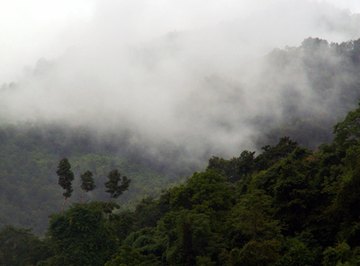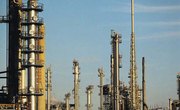
Resources are products from the environment that are useful to humans and can be renewable or non-renewable, depending on the propensity they have to regenerate relatively quickly. Oil, gems, and ore are non-renewable because these things take a very long time to form.
Renewable resources, conversely, are things like solar power, plants and animals. Plants are valuable renewable resources because they draw carbon dioxide out of the air while generating the oxygen supporting animal life.
In this post, we'll go over information on plants as a natural resource, as a renewable resource, and more.
Definition of a Renewable Resource
A renewable resource is a type of resource that can be used on repeat occasions and subsequently, and naturally, replaced. Let's look at a few examples to understand this definition.
Oil is not a renewable resource. Oil can only be used once before it's used up, and it cannot be naturally created or replaced; it takes thousands of years for oil to be produced.
Plants are a renewable resource. Plants can be used repeatedly and easily, and naturally, replaced. They can be replaced through farming, saving seeds, breeding, taking only certain parts of the plant without killing it, etc. This means that we can use plants as a natural resource for food, energy, power, etc, and it is renewable.
Factors Affecting Plant Renewal Rate
Plants are a renewable resource because they grow quickly and can replace themselves at fast rates. Several factors influence the rate of photosynthesis and, therefore, dictate how quickly plants regenerate.
Plants in warmer climates have higher photosynthetic rates than those in cooler temperatures. Plants regenerate especially quickly when there is little difference (e.g., 10 degrees) between daytime and nighttime highs.
The greater the amount of light a plant receives, the more quickly it will grow. Thus, plants will grow more during months with prolonged light (i.e., summertime). Plant nutrition also plays a role in growth. Plants growing in habitats containing sufficient concentrations of minerals such as phosphorus, nitrogen, sulfur, potassium, calcium, and magnesium as well as several other micro-nutrients will grow better than plants growing in nutrient-poor soil.
Increasing any of these factors (temperature, light or nutrition) can increase the rate of renewal.
Why Plants Are Important As a Renewable Resource
Plants play a vital role in the Earth’s ecosystems because of photosynthesis, which means they create oxygen while drawing carbon dioxide out of the atmosphere.
Because of human-induced increases in carbon dioxide in the atmosphere (potentially leading to the phenomenon of global warming), this process is particularly important. Humans also harvest plants for timber and food.
Without these plants’ ability to regenerate and serve as a renewable resource, humankind would not be sustainable.
Examples of Plants As a Renewable Resource
Because plants are a renewable resource, they can be harvested at relatively regular intervals without damage to the ecosystem. Trees harvested in the Pacific Northwest are typically replaced with smaller trees able to be harvested at a later date.
Fibers from plants such as cotton or hemp are grown annually, replacing the crops that were harvested at the end of the previous year. Food crops are also replaced annually.
Limit to Renewable Resources for Both Plants and Animals
Although plants are a renewable resource, they often do not regenerate as quickly as they are harvested.
In these cases, there are limits to the renewability of this resource, and conservation efforts must be put in place either to protect the plants from being over-harvested or to replace them at a high rate.
Conservation of Renewable Resources
Organizations such as the Arbor Day Foundation recognize the importance of plants as a renewable resource and encourage people to replace trees and other plants lost to timber harvests, disease and fire.
There's also the USDA plant database. The USDA plant database has compiled information on virtually all US plants. This is useful for understanding how to replace any plants that we use so we can maintain the resource.
Government organizations around the world similar to the USDA plant database also maintain "seed banks" with seeds saved from thousands of plants. This ensures that in the event we need them, we will be able to regrow virtually any plant we need for a resource.
